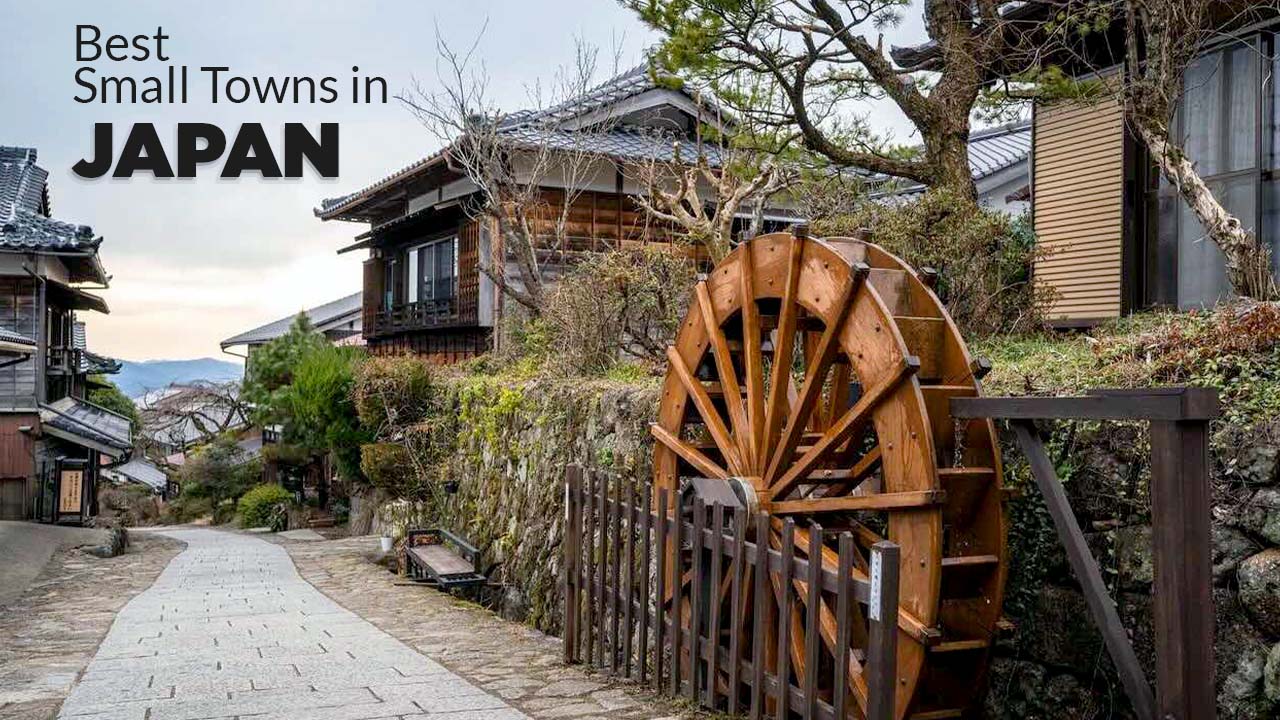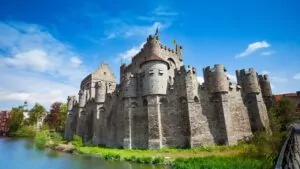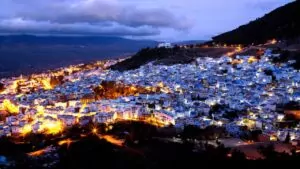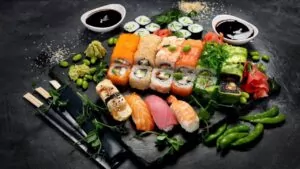Japan’s global reputation is often tied to its bustling metropolises-Tokyo’s neon-lit streets, Kyoto’s ancient temples, and Osaka’s culinary delights. Yet, the heart of the country beats strongest in its lesser-known corners. The best small towns in Japan offer travelers a chance to experience authentic traditions, breathtaking natural landscapes, and a pace of life that urban centers cannot match. As Japan’s inbound tourism continues to surge-reaching over 36.9 million international visitors in 2024 and expected to surpass 40 million in 2025-more explorers are venturing beyond the “Golden Route” to discover these rural treasures. This comprehensive guide will illuminate the best small towns in Japan, their unique histories, cultural significance, and the challenges and opportunities they face in a rapidly changing world.
The Best Small Towns in Japan: An Expansive, Detailed Overview
What Makes a Town One of the Best Small Towns in Japan?
- Authentic Cultural Heritage: Many of the best small towns in Japan have preserved traditional architecture, crafts, and festivals that have vanished from big cities.
- Natural Beauty: From mountain valleys to coastal villages, these towns are set amidst some of Japan’s most stunning scenery.
- Community Spirit: Local festivals, markets, and daily life offer a window into Japanese hospitality and resilience.
- Sustainable Tourism: Increasingly, these towns are pioneering sustainable tourism models, balancing visitor numbers with preservation and community benefit.
In-Depth Profiles: The Best Small Towns in Japan
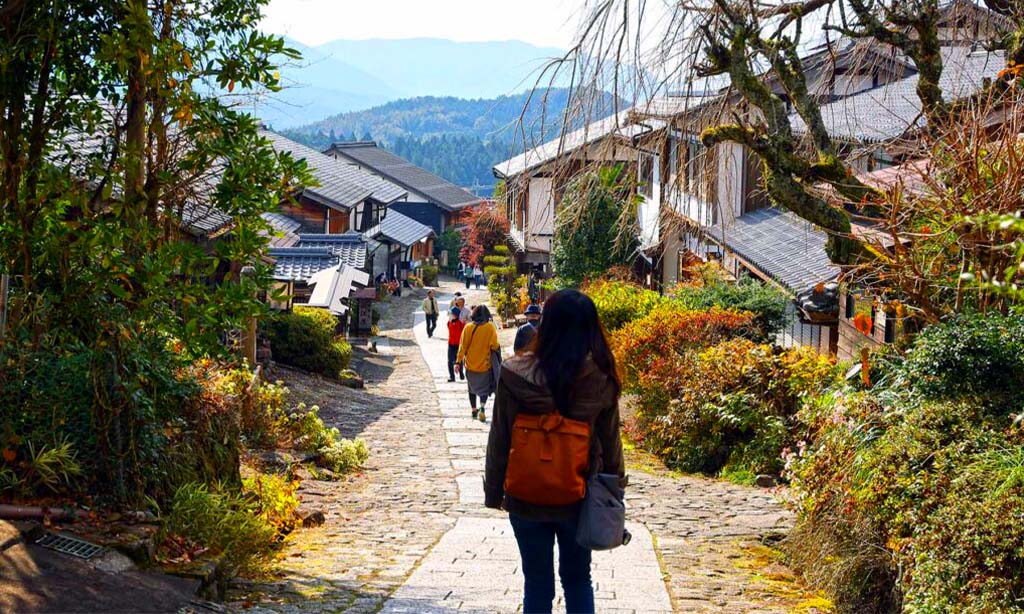
Below is a detailed exploration of the best small towns in Japan, each with its own unique charm and story.
Shirakawa-go (Gifu Prefecture)
- Overview: A UNESCO World Heritage site, Shirakawa-go is famed for its gassho-zukuri farmhouses-steep thatched roofs designed to withstand heavy snow.
- What to Do: Visit the Gassho-Zukuri Minkaen Museum to step inside preserved farmhouses and learn about rural life. The village is enchanting year-round, with cherry blossoms in spring, lush greenery in summer, and magical snowscapes in winter.
- Why It’s Special: The isolation of the surrounding mountains has preserved Shirakawa-go’s unique culture and architecture, making it a living museum of Japanese rural life.
Takayama (Gifu Prefecture)
- Overview: Known for its beautifully preserved Edo-period streets, Takayama boasts a vibrant festival culture and culinary scene.
- Highlights: Stroll through Sanmachi Suji, visit the Takayama Festival (one of Japan’s most spectacular), and try local Hida beef. The town is also a gateway to the Japanese Alps.
- Cultural Significance: Takayama’s festivals and crafts have been designated as Important Intangible Folk Cultural Properties, reflecting their national importance.
Kurashiki (Okayama Prefecture)
- Overview: Often called the most beautiful city in Japan, Kurashiki’s Bikan Historical Quarter features white-walled merchant houses and willow-lined canals.
- Attractions: Enjoy boat rides on the canal, visit the Ohara Museum of Art (home to masterpieces by Monet and Renoir), and explore boutique shops and cafes.
- Historic Value: Once a vital river port, Kurashiki’s architecture and museums offer a glimpse into Japan’s Edo-period prosperity.
Narai and Magome (Nagano Prefecture)
- Narai: The easternmost post town on the historic Nakasendo Trail, Narai is famed for its Edo-era architecture and lacquerwar.
- Magome: A beautifully restored post town, Magome is the starting point for the scenic Magome-Tsumago Trail, an 8-km hike through forests and waterfalls.
- Why Visit: Walking these towns is like stepping back in time, with preserved inns, tea houses, and cobbled streets.
Karuizawa (Nagano Prefecture)
- Overview: A mountain resort town beloved for its cool climate, autumn foliage, and romantic atmosphere.
- Activities: Birdwatching in Yacho-no-mori, exploring art galleries, and relaxing in stylish cafes. The town is easily accessible from Tokyo by high-speed train.
- Unique Fact: Karuizawa was the meeting place of Emperor Akihito and Empress Michiko, adding to its romantic allure.
Kusatsu Onsen (Gunma Prefecture)
- Overview: One of Japan’s most famous hot spring towns, Kusatsu Onsen is renowned for its mineral-rich waters and traditional bathing culture.
- Experiences: Soak in the Yubatake (hot water field), witness the Netsu-no-yu water-blessing ceremony, and stay in a ryokan.
- Cultural Note: Kusatsu’s hot springs are said to cure every illness but lovesickness, a testament to their legendary status.
Hiraizumi (Iwate Prefecture)
- Overview: Known as the “Kyoto of the North,” Hiraizumi is home to UNESCO World Heritage temples and peaceful gardens.
- What to See: Motsu-ji Temple, Chuson-ji Temple, and serene landscapes that inspired Japan’s earliest poetry.
- Why It’s Special: Hiraizumi’s history as a cultural and political center in the 12th century is still evident in its tranquil townscape.
Oshino Hakkai (Yamanashi Prefecture)
- Overview: A picturesque village with eight crystal-clear ponds fed by Mt. Fuji’s snowmelt, offering iconic views of Japan’s sacred mountain.
- Must-Do: Visit the Hannokibayashiminzoku Museum, stroll among traditional thatched houses, and sample local street food.
- UNESCO Status: The ponds are listed as a World Heritage Site, reflecting their cultural and natural importance.
Ine (Kyoto Prefecture)
- Overview: Ine is famous for its funaya (boat houses) built right on the water’s edge, combining fishing heritage with scenic beauty.
- Experience: Stay in a funaya, enjoy fresh seafood, and take a boat tour of Ine Bay.
- Local Life: Despite growing tourism, Ine remains a working fishing village, offering an authentic slice of coastal Japan.
Arita (Saga Prefecture)
- Overview: The birthplace of Japanese porcelain, Arita is a must-visit for ceramics enthusiasts.
- What to See: Explore pottery workshops, visit Tozan Shrine (with its unique ceramic torii gate), and tour the Hama-no-ura Rice Terraces nearby.
- Cultural Impact: Arita’s porcelain has been exported worldwide for centuries, shaping both local and global art.
Setoda (Hiroshima Prefecture)
- Overview: A key stop on the Shimanami Kaido cycling route, Setoda offers art, history, and stunning island scenery.
- Highlights: Visit Kousan-ji Temple (with its fantastical architecture), sample local citrus, and enjoy seaside cycling.
- Why Visit: Setoda blends island culture with spiritual heritage, making it a relaxing and inspiring destination.
Obama (Fukui Prefecture)
- Overview: Nicknamed the “Nara of the North,” Obama is known for its temples, gardens, and fresh seafood.
- What to Do: Explore historic sites, enjoy ocean views, and savor local cuisine.
- Fun Fact: Obama gained brief fame due to its name’s connection to the former US president, but its traditional charms are its true draw.
Noboribetsu (Hokkaido)
- Overview: Hokkaido’s premier onsen town, Noboribetsu is famous for its hot springs and the dramatic Jigokudani (“Hell Valley”).
- Activities: Hike among steaming vents and colorful autumn foliage, and relax in therapeutic baths.
- Why It’s Special: Noboribetsu’s geothermal wonders make it a year-round destination for nature and wellness seekers.
Ozu (Ehime Prefecture)
- Overview: Known as “Little Kyoto,” Ozu features a castle, samurai residences, and a model of sustainable tourism.
- Experience: Stay in a hotel dispersed across historic buildings, support local crafts, and explore the scenic Hiji River.
- Sustainability: Ozu’s tourism model has won awards for balancing preservation with community benefit.
The Economic and Cultural Impact of Tourism in Japan’s Small Towns
Economic Revitalization and Sustainability
Tourism has become a vital tool for revitalizing Japan’s rural economy, which faces challenges like aging populations and declining industries. Government initiatives and local entrepreneurship have helped transform many of the best small towns in Japan into vibrant destinations.
Key Statistics:
- Japan welcomed 36.9 million international visitors in 2024, with projections to exceed 40 million in 2025.
- Rural prefectures, despite seeing fewer tourists than urban areas, benefit more proportionally from each visitor’s spending, helping to offset population decline and economic stagnation.
- The Japanese government has invested trillions of yen in promoting rural tourism and sustainable travel.
Economic Opportunities:
- New infrastructure (roads, internet, ports) benefits both visitors and residents.
- Tourism diversifies local economies, creating jobs in hospitality, transportation, and crafts.
- Community-based tourism, such as homestays and craft workshops, keeps profits local and supports traditional livelihoods.
Challenges:
- Overtourism in some hotspots can strain infrastructure and disrupt daily life.
- Seasonal fluctuations and external shocks (e.g., pandemics) make tourism a volatile economic base.
- Balancing preservation with modernization is an ongoing struggle, requiring strong local governance and community involvement.
Preserving Cultural Heritage
The best small towns in Japan are often guardians of the nation’s intangible heritage-festivals, crafts, architecture, and rural landscapes.
Efforts to register sites as UNESCO World Heritage or Important Cultural Landscapes bring attention and funding, but also require careful management to avoid “theme park” commercialization.
Machiya Houses: These traditional townhouses, especially in towns like Kanazawa and Kurashiki, are central to preserving urban heritage. Restoration and adaptive reuse keep these buildings alive, balancing modern needs with historical integrity.
Festivals and Events: From the Takayama Festival’s ornate floats to the Sōma Nomaoi samurai horse races, festivals are both a draw for tourists and a way for communities to sustain traditions.
However, depopulation threatens the continuity of these events, making tourism support crucial.
Cultural Landscapes: Japan has 30 officially recognized Important Cultural Landscapes, such as the Warabino paddy fields, which provide environmental, educational, and economic benefits to local communities.
Sustainable Tourism: The Future for Japan’s Best Small Towns
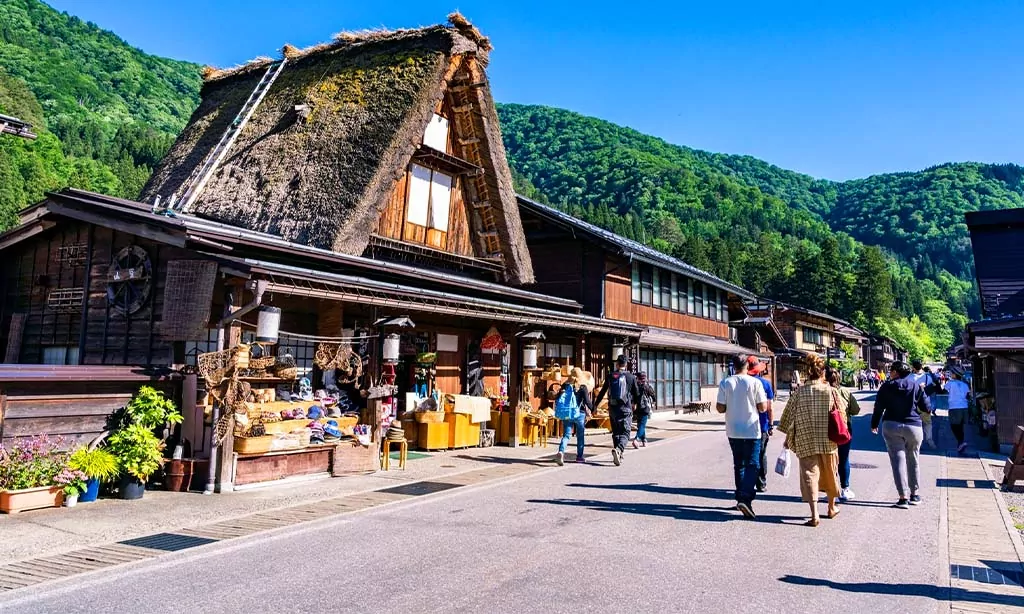
Community-Led Tourism Models
Some of the best small towns in Japan have pioneered community-led tourism that prioritizes local benefit:
- Ojika Island (Nagasaki): Focuses on homestays in old folk houses, ensuring tourism revenue circulates locally.
- Ozu (Ehime): Uses a dispersed hotel model, supporting local craftspeople and preserving historic buildings.
- Kamikatsu (Tokushima): Developed eco-tourism without inviting large resorts, keeping the community at the center of tourism planning.
Government and Industry Initiatives
- The Japan Tourism Agency established a Sustainable Tourism Promotion office in 2018 and joined the Global Sustainable Tourism Council to set international standards.
- National funds for “regional revitalization through tourism” are available to support infrastructure, multilingual signage, and training for local entrepreneurs.
- Collaboration between big hotels and local producers (e.g., sourcing food, crafts) helps spread economic benefits.
Visitor Tips for Responsible Travel
- Travel Off-Peak: Avoid crowds by visiting early or in the shoulder seasons.
- Stay Local: Choose ryokans, minpaku (homestays), or restored machiya for authentic experiences.
- Support Local Businesses: Shop for crafts, dine at family-run eateries, and join guided tours by residents.
- Respect Traditions: Be mindful of local customs, especially during festivals and in sacred spaces.
- Leave No Trace: Help preserve natural and cultural sites for future generations.
Practical Information: How to Visit the Best Small Towns in Japan
Planning Your Itinerary
Integrating the best small towns in Japan into your trip requires some planning, as many are not on the main tourist routes. However, Japan’s excellent rail and bus networks make even remote villages accessible.
- Duration: Even a short trip can include a small town-consider a day trip from a major city or an overnight stay for a deeper experience.
- Transport: Use the Japan Rail Pass for regional trains, or rent a car for flexibility in rural areas.
- Language: English signage is increasingly common, but learning a few Japanese phrases enhances the experience and is appreciated by locals.
Sample Itinerary: Central Japan’s Small Towns
| Day | Destination | Highlights |
| 1 | Takayama | Old town, festival, Hida beef |
| 2 | Shirakawa-go | Gassho-zukuri houses, open-air museum |
| 3 | Kanazawa | Samurai district, Kenrokuen Garden, machiya |
| 4 | Kurashiki | Bikan Quarter, Ohara Museum, canal ride |
| 5 | Magome/Narai | Nakasendo Trail, Edo-period architecture |
Frequently Asked Questions About the Best Small Towns in Japan
What is the best time of year to visit small towns in Japan?
Spring (cherry blossoms) and autumn (foliage) are especially beautiful, but winter snowscapes and summer festivals also offer unique experiences.
Are small towns in Japan suitable for families or solo travelers?
Absolutely. Many towns are family-friendly, with cultural activities and nature walks. Solo travelers will find welcoming communities and safe environments.
Can I experience traditional Japanese culture in small towns?
Yes. From tea ceremonies and onsen baths to local festivals and crafts, small towns offer immersive cultural experiences not found in big cities.
How can I travel sustainably in Japan’s small towns?
Choose local accommodations, minimize waste, respect local customs, and support community-based tourism initiatives.
Takeaways
The best small towns in Japan are more than picturesque backdrops-they are living communities where history, culture, and nature intertwine. As Japan’s tourism landscape evolves, these towns offer a blueprint for sustainable, meaningful travel that benefits both visitors and residents. Whether you’re drawn by the allure of ancient festivals, the serenity of rural landscapes, or the warmth of local hospitality, exploring the best small towns in Japan will leave you with memories and connections that last a lifetime.

